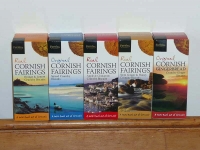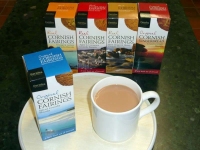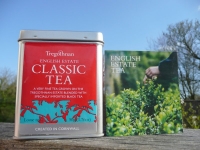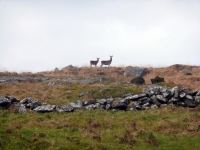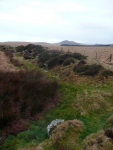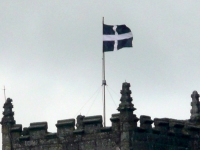Cornish Fairings truly are ‘A taste that’s out of Cornwall‘, and it is a great shame that they are not more widely available – considering that they have been a Cornish favourite for over 100 years. It was only a few years ago that they almost became an endangered species when the factory was forced to close due to lack of demand – which would have been a great tragedy for Fairings fans. Thankfully someone saw sense and they were rescued.
Tag Archives: Cornwall
Minions and the Cheesewring
As I continued to make my way through the 40 different sausage selections to choose from at the B&B for breakfast I needed to get out and stretch my legs. Without really knowing I had already walked up and around the highest peak in Cornwall last month, so chose one of the more heritage areas around Minions this time around.
Minions is the highest village in Cornwall, high up on Bodmin moor, and was totally created for the needs of the local industries: mining, quarrying and railways. It was almost entirely constructed in the few years between1863 and 1880. The area though is thought to have been inhabited for around 6,000 years, and old field systems and settlement areas can still be seen amidst the moorland, though they can be more clearly seen in Google Maps.
Bodmin Moor panorama
Stretching my legs a little over Bodmin Moor I came across a wonderful view near Minions.
Continue reading
English Estate Tea from Tregothnan
Tea was reputedly discovered in China in 2737 BC by Emperor Shen Nung when he was sitting beneath a tree being served boiled drinking water by his servant. A leaf from the tree dropped into the water – and thus the first cup of tea was born brewed.
It was not until 1615 that tea was first mentioned in British literature, and it was the British who took it all over the world and cultivated it in large quantities in India and Africa.
At the forefront of novel plant introductions the Tregothnan Estate began the search for the perfect tea when it was recently shown that high quality tea could thrive in Cornwall.
Now I just have to find some Cornish Fairings biscuits…
Tregothnan, what a corker!
The weather was not good, and the forecast was not much better, but I had to do something today having had a very good breakfast (continuing to work my way through the 40 different sausage selections to choose from at the B&B!). Andy and Jane recommended that I visit Tregothnan, the traditional home of the Boscawen family, and the seat of Lord Falmouth, which is only open for one weekend of the year and this weekend is it – looks like my luck was in, lets hope it holds.
Eden Project revisited
I had such a good time visiting last month, I was really pleased to be back again now. I had only ever spent time down ‘in the pit’ but I was curious about the wider estate. Having a look at Google Maps and Microsoft Live Search Map gave a real insight into the evolution of the site.
An amble on Bodmin Moor
Having tried to find shelter from the strong northerly wind yesterday on The Lizard, the promise of better weather today coaxed me out onto Bodmin Moor…
Saffron cake
Cornwall is one of the few places in the UK where saffron is used to make cakes and buns, though similar delicacies can be found in a few places around the world.
Saffron cake is a rich yeast dough cake that is flavoured with saffron and contains currants. With the delicate saffron flavour also comes the rich and distinctive yellow colour to the cake.
Traditionally saffron cakes were only made at Easter time, though thankfully they are now available to enjoy all year round with a cup of tea!
St Piran’s Day
March 5th is the ‘national day’ for Cornwall, named after one of the patron saints of Cornwall, Saint Piran. It is not officially recognised (outside of Cornwall) but petitions have called for it to be made a Cornish public holiday.
Saint Piran was an early 6th century Cornish abbot, supposedly of Irish origin (the Irish were said to have tied him to a mill-stone, rolled it over the edge of a cliff into a stormy sea, which immediately became calm, and he floated over the water to land upon the sandy beach of Perranzabuloe in Cornwall).
St Piran became the patron saint of tin miners having ‘rediscovered’ tin-smelting when his black hearthstone had the tin smelt out of it and rise to the top in the form of a white cross (thus the image on the flag). The flag however also has similarities to the old Breton flag (white flag with a black cross) and also the Flag of Saint David (black flag with a yellow cross).
A pasty or two from Cornwall
It is said that you never talk of a ‘Cornish pasty’ in Cornwall. It’s always referred to simply as a pasty…
The delicious savoury parcel is a meal in itself, and doesn’t need to be accompanied by anything – other than a nice cup of tea. The vegetables within, comprising onions, potatoes and swede (called turnip in Cornwall), must be sliced. The meat, usually skirt or chuck steak, should be chopped. The filling always goes into the pasty raw, and baking takes upwards of an hour during which time the filling steams and its flavours blend together – acting to form a gravy.
